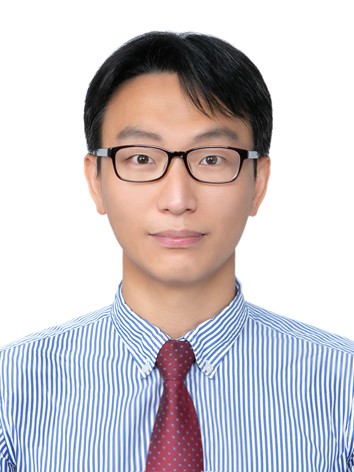Everywhere I go these days, I hear a common refrain: “You're right, but we've always done things this way, so it's hard to change.” This is true whether it’s in the real world or in the national healthcare policy. If you look up when the “way things have always been done” was created, it's only about 20 years old. Many things were introduced as adaptations to the changing environment at the time. However, I feel that the legacy of the past, created through these adaptations, has become a dogma that cannot be changed. The lack of progress in healthcare policies tailored to demographics from 20 years ago is a strange parallel to some Japanese companies' use of fax machines and floppy disks.
The median age of Korean society is rising rapidly. The median age refers to the age of the person exactly in the middle when the population is listed in order of age. In Korea, it was 20 in 1976, 30 in 1997, 40 in 2014, and 46.1 this year, increasing by an average of 0.6 years annually over the past two decades. It is projected to reach 50 by 2031. This rising median age not only reflects demographic shifts but also suggests a trend toward conservatism and resistance to innovation, as older populations tend to be more risk-averse and favor maintaining the status quo.
The importance of innovation in youth is evident when looking at key figures in Korea's past economic development. Hyundai Group founder Chung Ju-young started a construction company at 32, and Samsung Group founder Lee Byung-chul founded the Samsung Trading at 28. Korean critic and novelist Lee O-young began writing columns critiquing literary giants at just 23. Their bold challenges and innovations were driven by their youth. After the Korean War, it was possible for a man in his 20s to become a general or the CEO of a construction company. Over the next 30 years, as Korea built industries and institutions comparable to those of developed nations, median-aged individuals became society's opinion leaders.
The fact that the current generation in their mid-50s to mid-60s has played a pivotal role in Korea's transformation for so long is closely tied to the median age. They crossed key societal thresholds at a relatively young age. After spending their 20s involved in student movements, they moved directly into management roles in their 30s, and since then, they have held influential positions across society. This trend is also reflected in popular culture, where many celebrities who gained fame in the 90s in their 20s and 30s have now become mainstream figures.
However, as the median age rises, it becomes increasingly challenging for younger generations to drive innovation. In a democracy with a one-person, one-vote system, the opinions of older individuals may be presented as mainstream. Given Korea's population pyramid, this system will likely favor the older generation, especially in politics. The average age of lawmakers continues to go up, with the 17th parliament elected in 2004 having an average age of 50.8 years, compared to 56.3 years for the 22nd parliament elected this year. This reflects the limited entry of younger politicians and suggests that the voices of the younger generation may not be adequately represented in policymaking. If unaddressed, this could hinder the ability to make urgent policy decisions on critical issues such as the declining birthrate, aging population, and climate change, which are essential for the sustainable future of younger generations.

These structural realities are also impacting young people's career choices and life paths. The time it takes to establish oneself in society and the workplace is increasing, leading to a growing preference for careers like YouTubers, which can achieve success at any age, or becoming property owners, who enjoy passive income. Professions that require gradual accumulation of hard work are becoming less attractive, as a widespread desire to bypass traditional paths and achieve rapid success is emerging among younger generations.
On the other hand, earning a stable income from a traditional job now often requires being closer to the median age. This has made it challenging for individuals to start a “normal family” by marrying and having children in their 20s, as was more common in the past. According to a survey by employment portal Incruit, the average age of first job entry was 25.6 years old for men and 22.6 years old for women in 1997, but by 2023, it had increased to 29.4 and 27.6 years old, respectively. If individuals delay having children to focus on their careers, they may find that by the time they have the financial means to do so, they are no longer biologically fertile.
Failure to understand these dynamics of demographic change results in misidentifying the causes of these issues and proposing ineffective solutions. With a year's worth of hard work only advancing a fraction of the median age band and yielding only a 0.4-year increase in social status, young people are forced to chase an ever-elusive goal. This isn't merely a matter of someone deliberately moving the ladder away; it's an inevitable consequence of demographic shifts. The trend of those near the median age band gaining a stronger voice is not only detrimental to future generations but can also lead to a resurgence of ageism—discrimination based on age—that treats older ones unfairly.
It's becoming clear that Korea's total birth rate this year will be lower than last year's. The world is changing rapidly, but older generations find it difficult to escape the systems established by a younger Korea 20 years ago. While the rising median age is an inevitable reality, it should not be used as an excuse to halt innovation. Instead, we should view it as an opportunity to share wisdom and experience across generations and build a new social system that leverages each other's strengths. Let’s focus on collaboration rather than numerical age.

Jung Hee-won, a geriatric physician at Asan Medical Center, graduated from Seoul National University College of Medicine and trained at Seoul National University Hospital. During his med-school days, while practicing the horn, he realized the importance of muscle maintenance and became interested in sarcopenia. His main research interests include frailty, sarcopenia and establishing age-friendly health systems for acute hospitals. This column was originally published in Chosun Ilbo in Korean on September 10, 2024. -- Ed.
Related articles
- [Column] Elderly driving became 'elephant in the room': Is returning a license the only way?
- [Column] Beware ‘Snapshot Fallacy’: Those aged 65 or over may not be considered older adults in 20 years
- [Column] Age 73: a tipping point in health. Ditch the supplements and do strength training that doesn’t cost much.
- [Column] What matters is patient-centric healthcare, not the 2,000-seat increase
- The impact of stigma and service gaps on mental health in Korea vs US
- 'Korean health AI innovators face challenges in US due to limited engagement with key opinion leaders'
- [Column] Why leaders must stay sober
- [Column] Embrace voluntary discomfort for a fuller life in your later years
- [Column] Korea needs 'slow aging' in every sector
- [Column] Blood donation crisis: in 20 years, 2 people will have to share 1 supply

